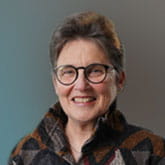The COVID-19 pandemic is being viewed by many as a watershed event for the American health care system.
In conversations with thought leaders across the country, many have used phrases like “healthcare will not return to the way it was before COVID-19” and “Nothing will be the same after the pandemic.” When asked what changes imposed by COVID-19 might be long lasting, respondents have uniformly singled out the exponential growth in telehealth and expressed conviction that virtual visits are here to stay.
Primary care is a specialty where telehealth visits have been uniformly implemented during the COVID-19 pandemic and in many practices, the majority of visits are being conducted virtually.
The shift to virtual visits is going to have a profound impact on the way primary care is practiced. Existing office space may no longer be needed as less patients will require in-person office visits on a daily basis. Office layouts with collaborative workspace for providers and care teams may also no longer be practical as providers will require quiet individual offices to conduct virtual visits with patients. Waiting rooms may become obsolete as less patients seek care in the office setting, and those that do, will likely perform many of the check-in tasks from the safety of their homes and cars, bypassing the waiting room altogether.
Staffing in primary care offices has shifted very little over the years. A 2018 survey conducted by Premier identified wide variation in staffing models across 257 family medicine and primary care practices comprised of more than 885 providers and 1,445 staff. Overall, 22 percent of family medicine clinics used a medical assistant (MA)-only model; 54 percent were staffed with a combination of registered nurses (RNs) or licensed practical nurses (LPNs) along with MAs; and 24 percent were staffed with RNs, MAs and LPNs1. These teams are primarily focused on direct patient care on a daily basis. As care shifts virtually, the staffing model required to support this practice model might look very different. Routine rooming tasks will decrease significantly, but more interactions with patients requiring higher skilled interventions will occur as patients having in-person visits will likely be more complex clinically. Novel tasks supporting the virtual visit will emerge. For example, virtually “rooming” the patient, preparing them for the visit and making sure remote monitoring data is exchanged and available to the provider when he/she is ready to interact with the patient.
There is much to learn about the best approach to integrating virtual visits into practice workflows and the impact this will have on optimal staffing ratios and the staff skills required. As the pandemic recedes, it will become clearer what lasting impact it will have on the practice of primary care as we knew it, only a few weeks ago.
Meet NextGen Ambient Assist, your new AI ally that generates a structured SOAP note in seconds from listening to the natural patient/provider conversation.
Read NowCategories
- Analytics and Reporting
- Regulatory Updates
- Artificial Intelligence (AI)
- Community Health
- COVID-19
- Dental
- Documentation
- Electronic Health Records
- Financial Management
- Health IT 101
- Industry news
- Integrated Care
- Interoperability
- Mobile EHR
- NextGen Advisors
- Patient Experience
- Practice Management
- Provider Experience
- Patient Engagement
- Population Health
- Revenue Cycle Management
- Small Practice
- Telehealth
- Value-based Care
